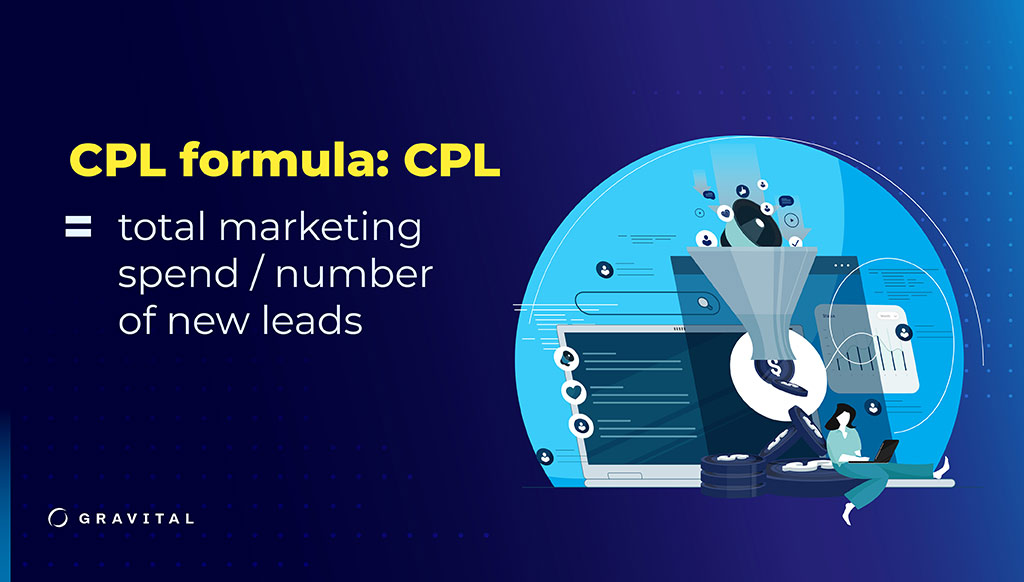Measurable results are essential to achieve desirable outcomes. Business leaders and marketers must rely on accurate, relevant and timely information in order to make better decisions and drive growth in their organizations.
By tracking the right metrics, companies can obtain actionable insights into the performance of their marketing initiatives. These insights lead to better decisions, which lead to better outcomes.
In this blog post, we’ll briefly explore the top 10 metrics successful businesses and marketers use.
1. Conversion Rate
Conversion rate measures the percentage of potential customers who take a desired action, such as making a purchase, filling out a form, or subscribing to a newsletter. By tracking their conversion rates, companies can determine areas in which their marketing tactics may be falling short and make adjustments to improve performance and increase conversions.
For example, if a subscription business offers a free trial to 1,000 potential customers, and 200 of them take advantage of it, the conversion rate is 20%.
ALSO READ: WEBSITE OPTIMIZATION: A QUICK GUIDE TO THE BASICS, BENEFITS & STRATEGIES
2. Customer Acquisition Cost
CAC is the cost of acquiring a new customer, including all marketing and sales expenses. CAC is particularly important for brands that rely on customer acquisition to drive growth. Using this metric, companies can determine the profitability of their marketing campaigns and modify their spending to ensure a positive return on investment.
If a brand invests $1 million in marketing and sales and gets 500 new customers, the CAC is $2,000 per customer.
3. Customer Lifetime Value
CLTV is the amount of money customers will spend on products or services during their entire relationship with a company. This metric helps brands to identify which customers are the most valuable for business and invest more in retaining them.
For instance, suppose a company with an overall 20% profit margin retains customers for an average of five years. With an average transaction value of $100 and each customer making 10 purchases per year, the CLV is $1,000.
4. Return on Marketing Investment
ROMI is a key metric that measures the profitability of incremental sales that can be attributed to marketing activity. It can be calculated separately for each marketing or advertising channel. Businesses continually track their ROMI to determine which marketing investments are the most effective and allocate resources to maximize their return.
5. Cost Per Lead
CPL measures how much it costs to identify, attract, qualify and retain a customer. Determining how much each lead costs helps brands allocate their budgets appropriately. Keep in mind that just because a particular channel incurs a higher CPL doesn’t mean you should drop it. Those customers might actually convert at a higher rate or spend more than customers gained through lower-CPL channels.


ALSO READ: 10 PROVEN WAYS TO ENGAGE YOUR AUDIENCE WITH DIGITAL MARKETING
6. Churn Rate
Churn rate is the percentage of customers who stop using a product or service within a given period of time. Rising churn rates could indicate a problem with a company’s offerings or customer service approach, or it could mean the company is losing business to competitors. Churn rates, therefore, help brands spot areas where they should improve customer loyalty and retention and identify potential issues with products and services.
For example, if a company begins the year with 25,000 customers and ends it with 20,000, then the difference in the number of customers (5,000) indicates a 20% churn rate.
7. Net Promoter Score
The NPS is determined by asking customers how likely they are to recommend a product or service to others. Using the NPS, companies can evaluate word of mouth, measure customer satisfaction and loyalty, and identify potential brand advocates.
8. Website Bounce Rate
Like the conversion rate, this metric helps brands track how effective their marketing strategies are. Bounce rate measures how well a website landing page generates visitor interest by calculating the percentage of visitors who enter the site and leave before viewing other pages in the website.
For example, if a website has 200,000 visitors, and 100,000 of them view only one page, the bounce rate is 50%. Higher bounce rates show lower customer interest and engagement, so the lower the bounce rate, the better.
9. Cost per Click
CPC is a metric used in digital marketing to determine the cost of each click on a pay-per-click (PPC) advertising campaign and measure its effectiveness.
10. Social Media Engagement
Social media engagement measures the level of interaction that a brand receives on social media platforms. By tracking engagement, companies can identify which social media channels and types of content resonate most with their audiences and adjust them accordingly.
Adopting key marketing metrics helps your marketing team determine how effective its methods and channels are in supporting the success of your business.
For more information about marketing metrics and how to use them to enable sales and grow your business, talk to us.


